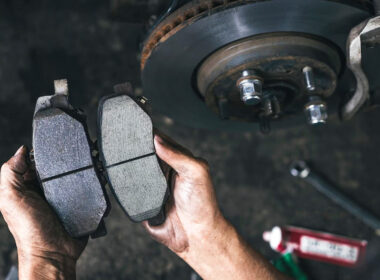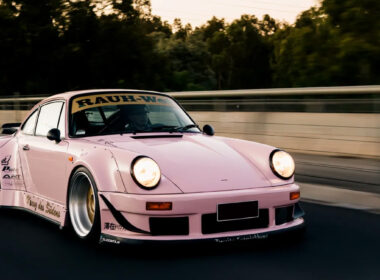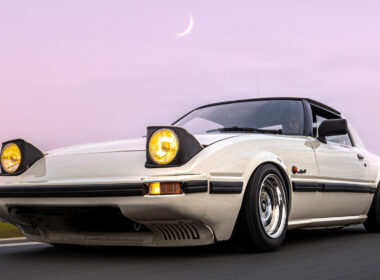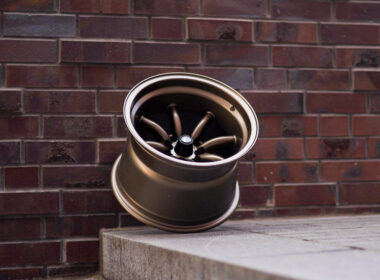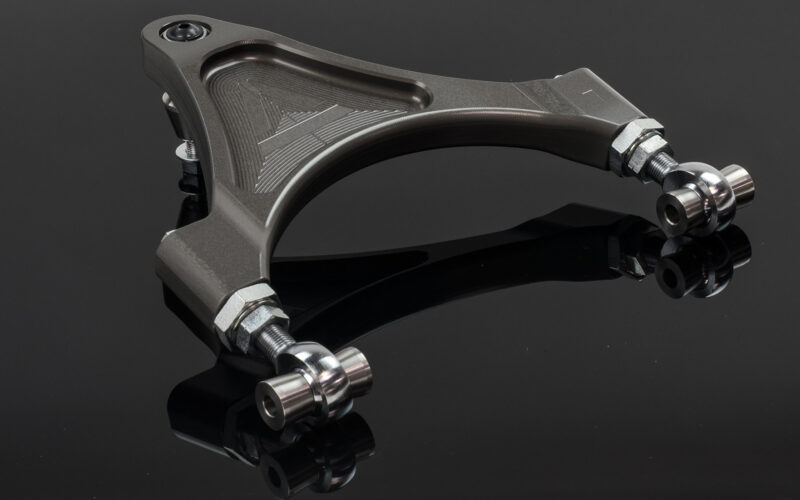Control arms are integral to your car’s suspension setup. They not only determine wheel alignment angles but also impact suspension travel and durability.
Servicing them at regular intervals or replacing them as needed is very much recommended. However, routine maintenance aside, there are other reasons why you might want to upgrade them.
Most OEM suspension arms work just fine for daily-driven applications. But if you’re into racing or if you’ve made serious changes to your suspension and want to restore the alignment settings to factory spec, then aftermarket control arms are worth considering.
Control Arms Explained

Control arms have 2 main responsibilities:
- Control, and
- Isolation.
Simply put, their main goal is to connect the wheels to the frame. They control the steering knuckle’s movement at the front end by confining it to a vertical trajectory. Each arm (upper and lower) has 2 chassis pivots which allow up and down motion but prevent lateral tilting.
The knuckle or spindle is connected to the control arm via ball joints, consequently controlling the wheels’ side-to-side movement.
Combine the two, and you get a system that enables the wheels to articulate vertically and move side-to-side as they cycle through compression, extension, and steering.
Additionally, wheel alignment angles such as camber, caster, and toe are determined partly by the length and angle of your control arms.
Many 4×4 trucks with solid-axle setups utilize control arms, but they’re far more prevalent in independent suspension systems such as:
- Double Wishbone
- MacPherson Strut
- Multi-link
- Semi-trailing arm
Control arms come in many shapes and sizes. They’re either A-shaped, or L-shaped, or they’re simply straight rods with a turnbuckle joint in the center and pivot points on each end — these are often seen on multi-link setups.

The A and L-shaped ones have a ball joint at the narrow end which attaches to the steering knuckle, allowing it to tilt and pivot from left to right. The knuckle is then bolted to the brake rotor and wheel assembly.
On the other end, the wider part attaches to the chassis in a way that allows it to move up and down. Upper and lower control arms together facilitate the wheel’s vertical and side-to-side movements, which determines the arc through which it travels.
The upper and lower control arms are abbreviated as UCA and LCA respectively.
Orientation and Positioning

Most independent suspension systems have upper and lower control arms on all 4 wheels. But with MacPherson setups, the upper control arms are replaced by the strut itself, which is bolted directly onto the body of the car.
Rear multi-link setups have more than just two suspension arms on each wheel. They also consist of a trailing or traction arm, and often a toe arm. This suspension type is usually seen only on the rear end of front-engine RWD cars due to limited space in the front.
Front control arms have the added responsibility of working with steering system components — tie-rods in particular, which allow the wheels to turn about their axis.

The layout, length, and angle of your control arms also depend on the configuration of your drivetrain (RWD, AWD, or FWD) and differential. This is because they need to accommodate the axles and CV joints or U joints, without disrupting the pinion angle and driveline alignment.
Regardless of the suspension type, it’s the lower arm that does most of the heavy lifting. When driving over road irregularities, it’s the first component that transfers the wheel’s vertical force to the coil springs and the subframe.
But when it comes to determining the wheel’s alignment angles, it’s the upper control arm that plays the more dominant role. That’s not to say that LCAs aren’t adjustable; most of them are. Even OE LCAs have some amount of adjustability in the form of eccentric bolts.
It’s just better to rely on UCAs, camber/caster plates, toe links, and the tie-rod for alignment settings as much as possible because they’re less vulnerable.
Why Install Aftermarket Control Arms?

Indeed, stock suspension setups on passenger cars and even some sporty cars are geared more toward ride comfort than outright performance.
Automakers will want to tend to the requirements of a larger audience and their business interests. There are also manufacturing budgets, packaging constraints, and design briefs to worry about.
Despite all that, the factory suspension systems on most cars are shockingly well-balanced. The engineers know what they’re doing.
It’s no wonder why some of the fastest cars at open track events don’t wander too far from factory suspension settings and prefer a more neutral setup. This also explains why driving instructors in stock cars can run laps around some improperly tuned cars.
Emphasis on the word “improperly”, because if you want to retain the benefits of all the engineering that’s gone into your factory suspension, you need to tune it the right way. Adjustable control arms are among the many upgrades that allow you to do that.
More Adjustability

Factory control arms do offer some amount of adjustability, but it’s very limited. In this context, adjustability means being able to change the length and angle of your control arms.
You need adjustability because the orientation of your control arms affects your suspension and wheel alignment angles such as:
- Roll center and roll couple
- Steering axis inclination
- Scrub radius
- Camber
- Caster
- Toe
When any of these angles change in a way that doesn’t suit your car’s driving dynamics, it causes a domino effect and throws off your suspension geometry. This affects weight transfer, tire load distribution, and traction.

Your stock suspension and wheel alignment measurements are set by the manufacturer to suit the factory ride height, tire size, and typical usage scenario. That’s why you need to be careful when making changes that involve:
- Changing your ride height by lowering or lifting your vehicle.
- Changing your wheel track by installing negative or positive offset wheels.
For example, UCAs and LCAs hinge from separate pivot points, which means they don’t follow the same arc throughout the suspension’s stroke.
This causes the wheels to gain and lose camber as they move up and down as the car experiences turning acceleration, and braking. The same applies when you alter the ride height.

When you lower or lift your vehicle, you inadvertently change the static and dynamic camber angle of your wheels.
Here’s another example: if your tie rods and control arms aren’t aligned correctly, your wheels will change their toe angle when going over a bump, better known as bump steer.
Adjustable control arms allow you to offset these unwanted changes in your suspension geometry by letting you change alignment measurements. That’s why they’re also called camber arms.
The mechanisms by which the control arms are made adjustable include eccentric bolts, slider plates, and turnbuckle joints. It varies significantly for each car.
Here are some of the features and advantages of aftermarket control arms:
- Roll center correction
- Drivetrain angle correction
- Additional down-travel clearance for lifted trucks
- Avoiding coil clearance issues
- Better quality ball joints
- On-the-fly adjustments
- Offsetting camber gain
- Better contact patch
- Pinion angle correction
- Centering the axle
- Bump steer correction
- Ability to fit differently-sized tires
OEM Replacement

If you haven’t modified your suspension or if you have coilovers installed with close to factory ride height and spring rates, then you don’t really need adjustable control arms.
Most OE control arms have a small amount of adjustability, which is generally enough for street-driven applications.
Another reason why you might want to replace your control arms is if the bushings and ball joints are completely worn out. If your OE control arms are serviceable, you can get away with replacing just the ball joints and bushings instead of buying a whole new set.
But in many cases, what you pay in labor costs to get your control arms serviced works out to be more expensive than buying a new set, unless you take the DIY route.
FAQ
Still unsure whether or not aftermarket control arms are for you? Take a look at some of the most commonly asked questions about this upgrade for more clarity.
Telltale Signs of a Failing Control Arm
The most common symptoms of failing control arms are vibration and judder. In this case, you will notice your wheels wobbling and wandering when going heavy on the throttle.
When your bushings wear out, it induces some amount of play in the ball joint and the chassis pivot points.
Eventually, there’s metal-to-metal contact which causes clunking and creaking sounds when driving over bumps or turning through a corner.
Why Do Control Arms Fail?
Control arm bushings are wearable components; they’re designed to wear out and be replaced over time.
However, hard impacts from driving over road irregularities can cause premature wear. Excessive rust and corrosion also play a role when it comes to premature wear.
What Features Should I Look For?
This depends on what type of vehicle you drive, what you plan on doing with it, and how much you want to spend.
You get to choose between features like serviceable bushings, the type of ball joints, tubing material quality, and dust protection to name a few. Replace the bushing if the control arm is expensive.
For Lowered Cars
If your car is mostly street-driven, choose any type of bushing and ball joint combination that has a metal-to-polymer contact as opposed to metal-to-metal. You can choose between the following bushing types:
- Polyurethane: Hard (90A), increased noise, volume, and harshness (NVH), less prone to deformation.
- Vulcanized rubber: Soft, reduced NVH. Restricts movement, street use only.
- Delrin: Low moisture absorption, high chemical resistance, high tensile strength. Stiff.
- Uniball: Stiff, great for racing, has zerk fittings for greasing. Gets dirty easily, expensive to replace.
Some ball joints are what they call “lubricated for life”. These are generally maintenance-free, but you can’t repair them, so avoid them if your car sees a lot of track time.
If your rear suspension has a divorced spring and damper setup and you want to install integrated true-type coilovers, then ensure that your aftermarket control arms include a bucket delete arm.
If you’re into stance or drifting, then you want to look for control arms that allow for as much negative camber as possible. Manufacturers make aftermarket arms for a variety of driving styles.
For Lifted Trucks
Some LCAs help to improve ground clearance and have a built-in skid plate, which is a nice feature to have. Look for caster adjustability if you want to clear bigger tires.
The bushing types mentioned above apply to trucks as well. Avoid non-greaseable bushings and ball joints if your truck sees a lot of trail time.
Spending more means you’ll get higher-duty chassis mounts and pivots; serviceable bushings and ball joints; a wider frame to clear wider coilovers; caster and camber adjustment; and better quality tubing.
Cheaper or OEM replacement control arms have ball joints with very limited angles, which will limit your droop travel. Some aftermarket shocks work well with OEM control arms, while others do not as they require additional droop travel.
If your control arms don’t allow for extra droop travel and you’re running high-travel shocks, there’s going to be metal-to-metal contact unless you have droop stops. This will also prematurely fail your ball joints by overworking the control arms.
Aftermarket control arms for both cars and trucks include the following options:
- SPC high misalignment greaseable ball joint
- Spherical bearing
- Moog ball joint
- Icon delta joint
- Uniball
Take Control
Now that you know the basics of control arms, how they work, and some of the reasons why you should install them, you can make the right choice for your car and driving style.
We recommend getting the installation and setup done by an experienced suspension technician, especially if you’re new to wrenching.
